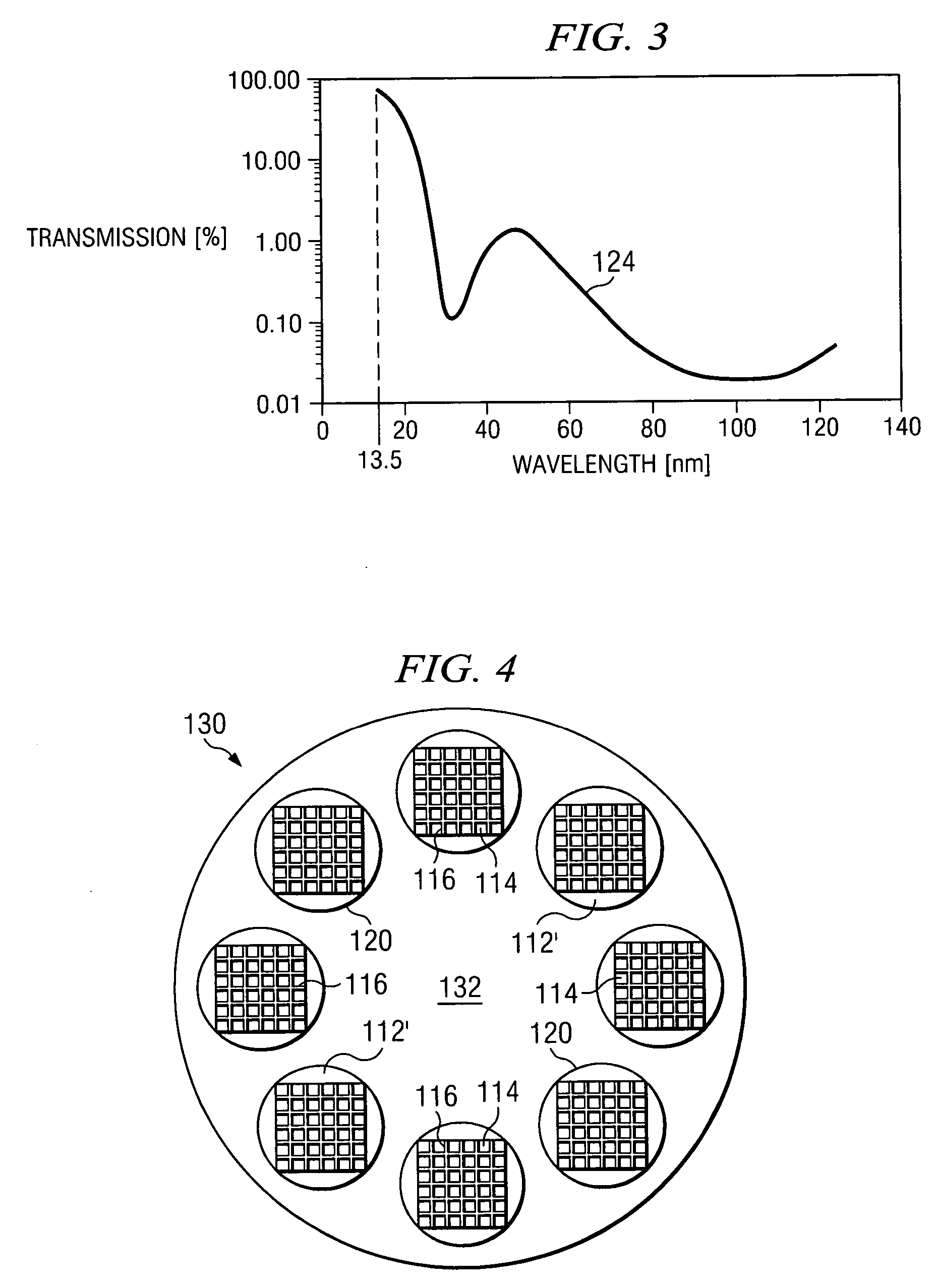EUV lithography filter
a lithography filter and lithography technology, applied in the field of semiconductor devices, can solve the problems of inability to replace frequently, inability to meet the needs of users, and high cost of optic mirrors, so as to achieve the effect of enabling the viability of euv lithography, reducing the accumulation of debris, and reducing damage to optical components
- Summary
- Abstract
- Description
- Claims
- Application Information
AI Technical Summary
Benefits of technology
Problems solved by technology
Method used
Image
Examples
Embodiment Construction
[0039] The making and using of the presently preferred embodiments are discussed in detail below. It should be appreciated, however, that the present invention provides many applicable inventive concepts that can be embodied in a wide variety of specific contexts. The specific embodiments discussed are merely illustrative of specific ways to make and use the invention, and do not limit the scope of the invention.
[0040] The present invention will be described with respect to preferred embodiments in a specific context, namely filters for use in EUV lithography systems. The invention may also be applied, however, to other applications that require filters, such as in other semiconductor lithography systems or in other systems with optical devices that need protection from debris.
[0041] The novel debris mitigation device or filter in accordance with embodiments of the present invention comprises a highly EUV transparent yet stable nanotube material sandwiched between two layers of st...
PUM
 Login to View More
Login to View More Abstract
Description
Claims
Application Information
 Login to View More
Login to View More - R&D
- Intellectual Property
- Life Sciences
- Materials
- Tech Scout
- Unparalleled Data Quality
- Higher Quality Content
- 60% Fewer Hallucinations
Browse by: Latest US Patents, China's latest patents, Technical Efficacy Thesaurus, Application Domain, Technology Topic, Popular Technical Reports.
© 2025 PatSnap. All rights reserved.Legal|Privacy policy|Modern Slavery Act Transparency Statement|Sitemap|About US| Contact US: help@patsnap.com



